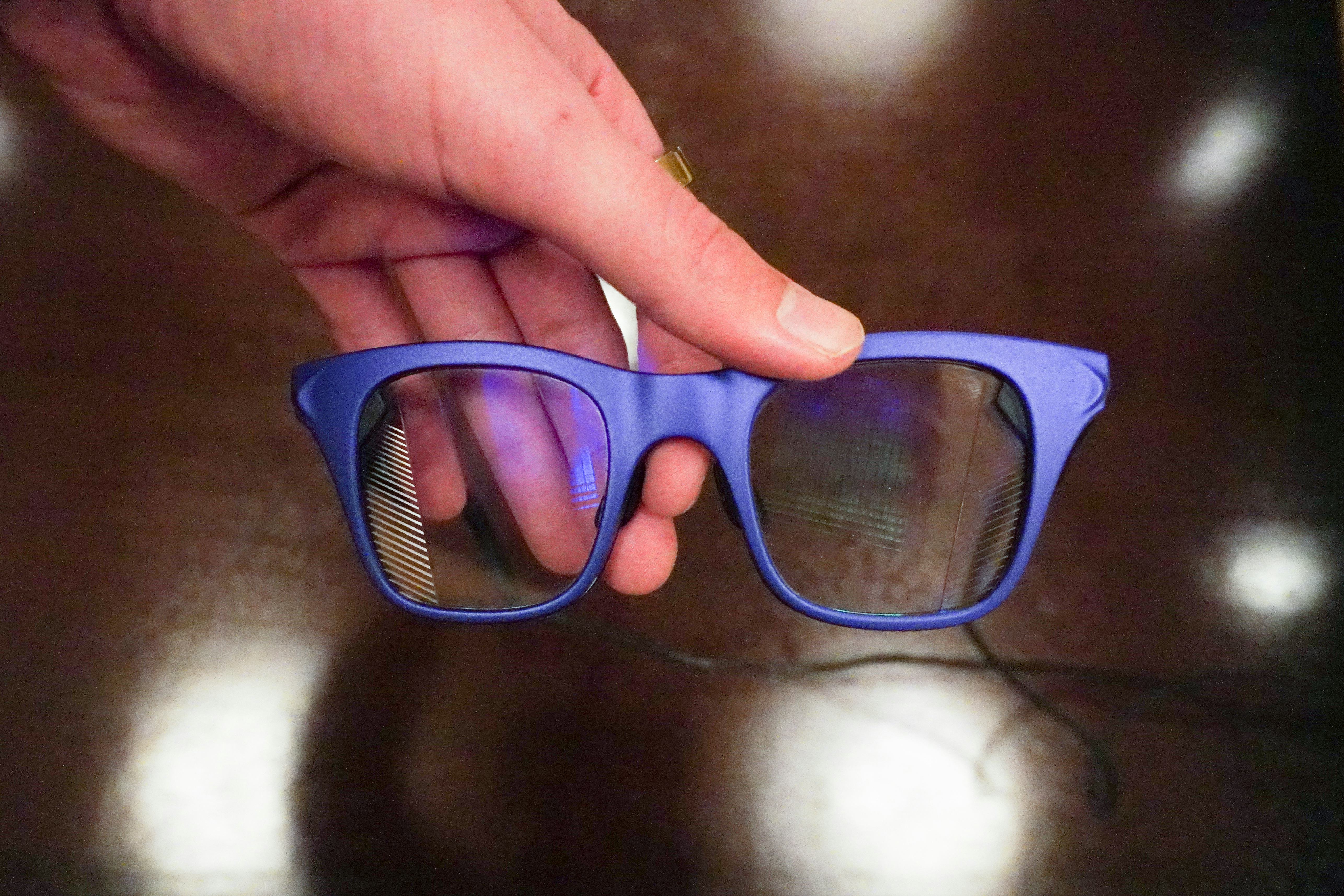
A proper everyday augmented reality experience is a long way off, but at CES 2023, an optics company called Lumus may just be offering a glimpse of what mainstream AR could look like.
And the emphasis is on “look.” Lumus creates one of the most important components of the AR pipeline, the waveguides and optics engines that create the images you see when you put a pair of glasses on. At CES 2023, the company announced its latest breakthrough: a second-generation Z-lens 2D reflective waveguide that is small enough to fit in a normal pair of glasses without compromising on brightness or field of view.
Riding the wave

Lumus new waveguide design is 50 percent smaller than its previous “Maximus” design and can reach a peak brightness of 3,000 nits while displaying images in a 50-degree field of view. Reducing the size of the waveguide and optical tech — the components that guide and reflect light into your eyes — means AR glasses that use Lumus’ design could theoretically offer slimmer lenses and lighter frames (with more room for battery or onboard processing).
Slipping on Lumus’ reference design that used the new Z-lens, I was immediately struck by how bright and legible the images the lenses displayed were. Lumus cycled through photos, animations, and big splash pages of text, which were pleasant to look at as they were excellent demonstrations of the dynamic range of the new Z-lens.



The 50-degree field of view is small — Lumus’ vice president of marketing David Andrew Goldman said they could achieve 80 degrees for the right partner — but not as annoying as I expected. According to Lumus, one of the added benefits of this new Z-lens design is much more flexibility in where images are displayed on your glasses. The eyebox — the part of an AR lens where images are best viewed — can theoretically be put in a multitude of places using Lumus’ waveguide architecture rather than just dead center.
That flexibility also allows Lumus’ waveguide to easily bond to prescription lenses. Accommodating people who wear glasses is the next major concern to address after making augmented reality experiences that actually work. Meta recently acquired a company with their own method of creating AR-compatible prescription lenses called Luxexcel, so Lumus is clearly in good company.
As a component manufacturer, Lumus doesn’t have a say in what a pair of AR glasses will actually do, but the company did share that it already has a major partner licensing its tech. Lumus won’t confirm, but there’s been speculation its waveguides were used in Niantic’s recent AR reference design. Either way, Lumus seems to have made the breakthroughs necessary for AR to see the beginning of mainstream acceptance, it’s just a matter of someone trying to make them work in their own device.
INVERSE brings you everything from the fun and futuristic world of consumer technology at CES 2023. For all the latest technology coverage from the show, go to the INVERSE CES 2023 hub.







